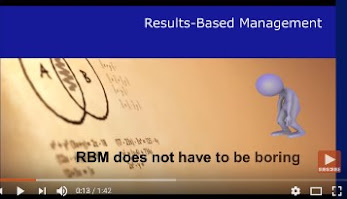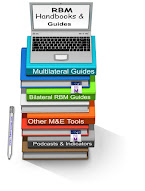Greg Armstrong --
[Most recent update: July 2019]
Here's the question: Will bilateral aid agencies hold the multilaterals to account for results or not? UN agencies’ results reporting is inconsistent, and the results frameworks of SIDA, AUSAID and DANIDA remain ambiguous. This post reviews results frameworks from USAID, DFID, CIDA and EuropeAid.
[Most recent update: July 2019]
Here's the question: Will bilateral aid agencies hold the multilaterals to account for results or not? UN agencies’ results reporting is inconsistent, and the results frameworks of SIDA, AUSAID and DANIDA remain ambiguous. This post reviews results frameworks from USAID, DFID, CIDA and EuropeAid.
Level of Difficulty: Moderate to complex
Primarily useful for: Project managers, national partners
Length: 23 documents, 1,444 p.
Most useful: CIDA RBM Guide, DFID LFA Guide and EuropeAid Capacity Development toolkit
Limitations: Mounds of bureaucratic language in many of the bilateral documents make it difficult to identify and take effective guidance from potentially useful material.
Who these materials are for
Project managers, evaluators and national partners trying to understand how USAID, DIFD, CIDA and EuropeAid define results and frame their approaches to RBM.
Background: Ambiguous results chains at the UN, and some bilateral agencies.
In my previous three posts, I examined how vague UN RBM frameworks can provide the rationale for some agencies to avoid reporting on results, to focus instead simply on describing their completed activities, and how similar ambiguities in the results frameworks and definitions from AusAid, DANIDA and SIDA , would make it difficult for them to hold the UN agencies to higher standards of results reporting. The fourth and final post in this series briefly surveys how the results frameworks of four more bilateral agencies compare to those of the OECD/DAC and UNDAF. This review is only, as I noted in past posts, of those agencies where information, in English, could be obtained in reasonable time from their own or associated -- and publicly accessible -- websites. For those who want more detail, links to the relevant donor agency RBM sites can be found at the bottom of this article.
I am proceeding from the premise, again, that “cause and effect” is not a reasonable description of what is intended by a results chain, but rather that it is a notional concept of how activities can contribute to intended results.






